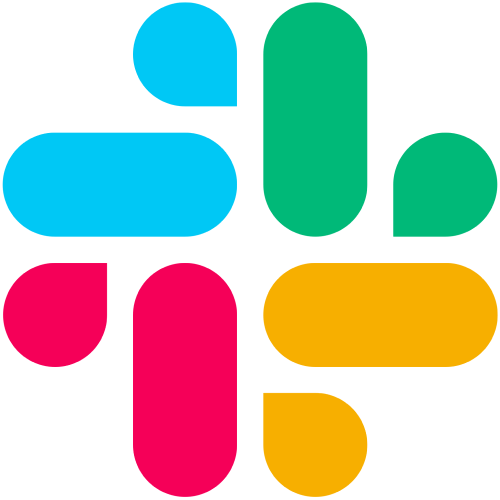7 Free Workflow Software Tools for Productivity in 2025

Sometimes it feels like there aren't enough hours in the day to get everything done. In business, tasks range from signing up a new customer to sending out emails, and they all involve a series of steps.
Workflow management software helps you automate those steps in the right order without mistakes, so you can focus on the most essential parts of your business process.
In this post, we will explore some of the best free workflow software tools you can find this year.
Use Activepieces for free today and discover how easy workflow automation can be!
What Is Workflow Software?
Workflow software runs day-to-day business processes without constant human intervention. Everything stays in one place, where your tasks move smoothly from one person to another.
You set it up by mapping the steps of a process, assigning people to roles, and adding conditional logic where needed. A trigger starts the flow, and once the trigger fires, the tool runs actions on its own.
Dashboards then highlight slow spots so you can identify bottlenecks early. Some systems add advanced analytics for a deeper look at task patterns across teams.
Workflow management software also manages:
- Routing
- Integrations with other apps
- Task tracking
That's why it works for small teams, creative teams, and even software development groups. From basic task management to complex workflows, these tools make it easier to manage workflows and keep projects progressing.
7 Best Free Workflow Software Tools for Productivity in 2025
An effective workflow management tool pushes work forward by automating tasks and helps you enhance productivity. Below are seven of the best free workflow software options to try in 2025.
1. Activepieces
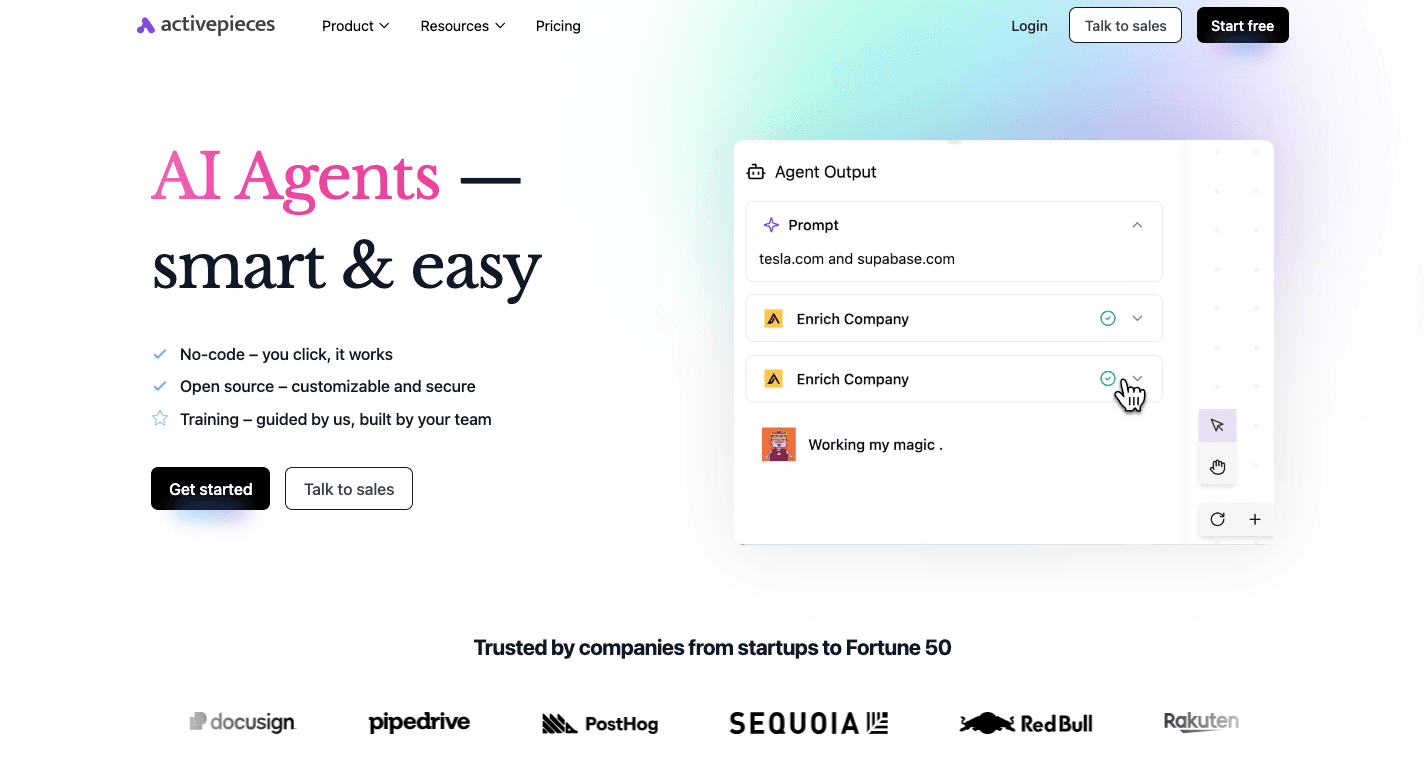
Activepieces is a free workflow automation tool to automate repetitive tasks and combine all your applications with no coding required. It does your everyday tasks with ease but also handles complex workflows that span departments or systems.
For instance, an SDR can automate client follow-ups, and then the entire sales team can work on mapping a complete workflow from sales outreach to customer support inside the same platform.
The no-code builder keeps things easy for you, while developers can create custom pieces in TypeScript.
Every week, the Activepieces community adds new pieces. As of now, there are 437 integrations, and the library keeps expanding.
Native AI steps and an AI Copilot are built into the experience to help you design smarter automations. Rules with conditional logic make flows responsive and adaptive, reducing the need for manual intervention.
Key Features
- Open source - A community of developers contributes, inspects, and enhances the software regularly. It is also available to embed in your software (a paid feature).
- No-code automation - Non-technical users can build complex workflows using a simple drag-and-drop interface. You can visually connect various apps known as pieces (actions or integrations) to create a logical flow for your tasks.
- Data integrations - Activepieces offers over 437 integrations across different tools and services.
- AI-powered capabilities - Activepieces includes native AI pieces steps for intelligent dynamic workflows such as content generation, data analysis, or conditional logic based on AI insights. These native AI pieces enable you to include these AI abilities in your workflows without an API key.
- Model context protocol (MCP) server for AI assistants - Activepieces is created around the largest open-source MCP server, which allows you to connect your workflows to AI assistants like Claude Cursor and Windsurf. Your AI assistants can then execute tasks for you via natural language prompts.
Integrations
The integrations, known as pieces, are Activepieces' assets.
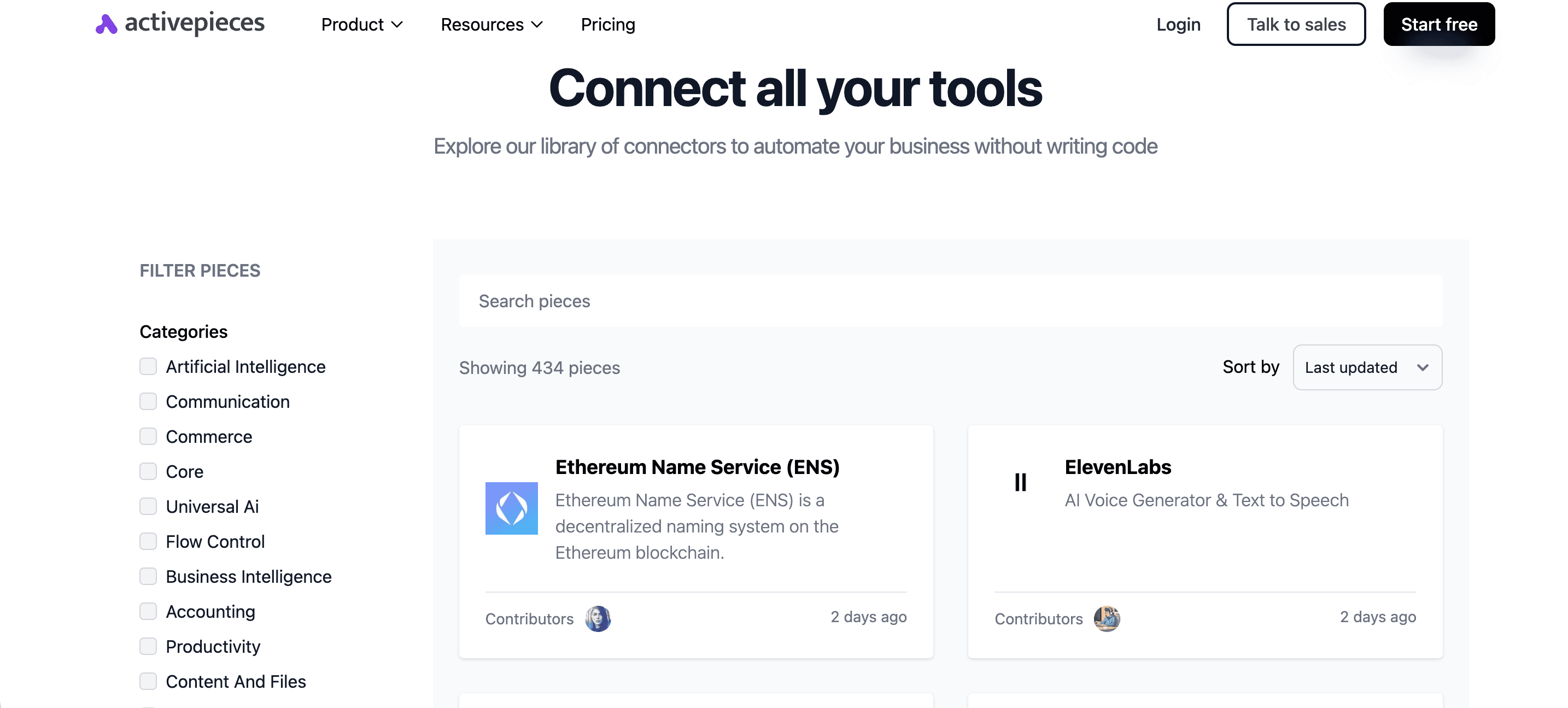
The library already includes 437 pre-built connectors and continues to expand daily. It covers nearly every category of work:
- OpenAI
- Google AI Studio (Gemini)
- ElevenLabs
- Google Sheets
- Slack
- ClickUp
- WordPress
- ActiveCampaign
- Zoho Books
- Microsoft Dynamics
- Microsoft Power BI
Beyond the pre-built catalog, developers can publish their own connectors through the open ecosystem. That community-driven growth makes sure Activepieces integrates with more apps than many competitors.
Since the platform supports AI-first workflows, integrations don't stop at traditional business apps. You also get models and AI agents that expand what automation can achieve.
Use Cases
Companies turn to Activepieces when other automation tools become too restrictive or too expensive, since it:
- Syncs leads from forms into CRMs, posts updates to social, and sends follow-ups without human effort.
- Routes data from email or chat apps into pipelines, auto-assigns deals, and keeps records current.
- Monitors tickets across platforms, updates statuses in real-time, and escalates issues automatically.
- Builds custom agents, summarizes emails, or scores leads using native AI steps.
Chat with our sales team today for personalized recommendations!
2. Monday.com
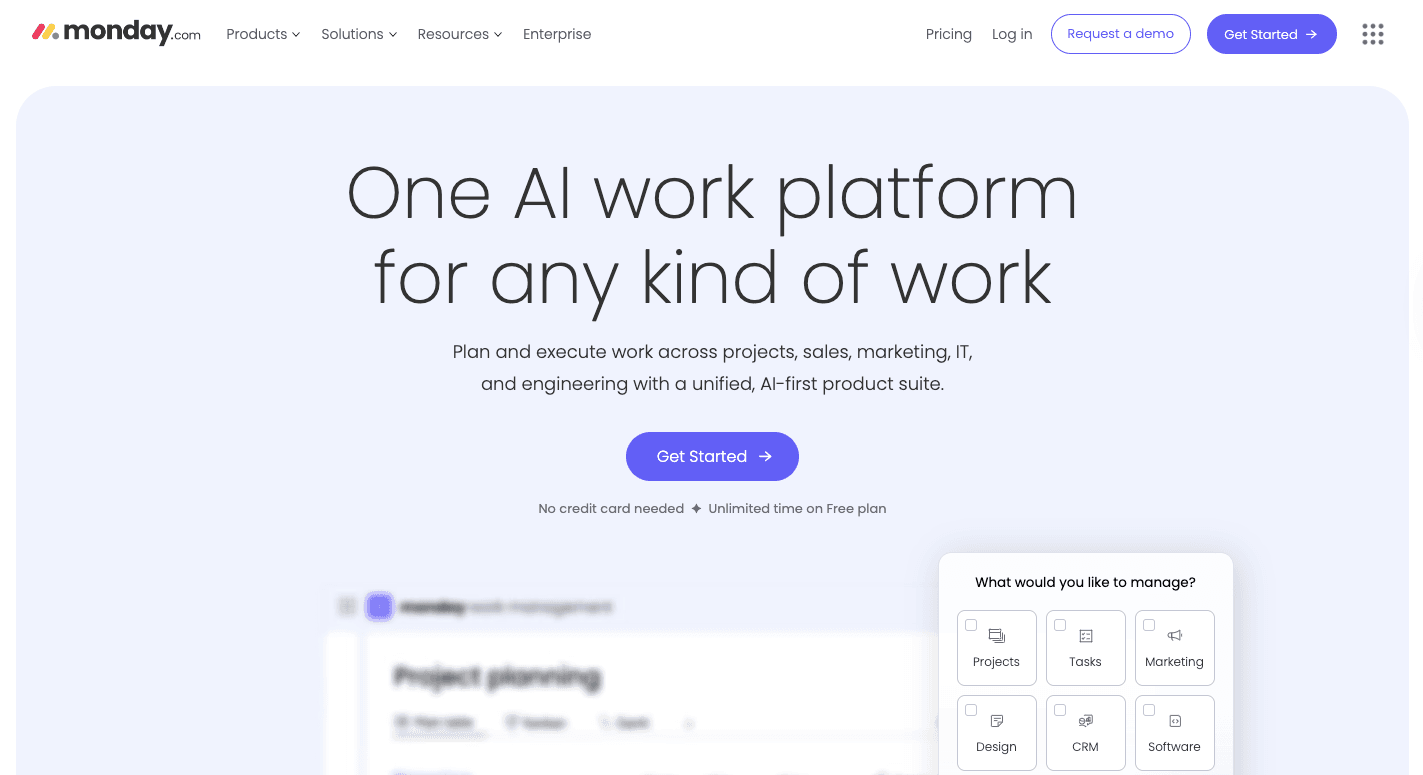
Monday.com is a digital work hub where you put all of your projects, tasks, and workflows together. People use it for simple things like basic task management, but also for more advanced setups.
You can lay out visual boards to follow progress, add custom fields such as owners or due dates, and connect boards so information stays linked. It also connects with different apps, including Slack, Gmail, and Google Drive, which keeps everyone working in the same place.
The free plan gives you a taste of the system with some free features, but bigger teams usually need to upgrade. Paid plans add more room for automations, offer unlimited docs for writing and note-taking, and expand integrations.
Key Features
- Columns - Fields you can change to show details like owners, status, or due dates.
- Views - Options such as table, Gantt, calendar, and visual boards.
- Automations - No-code rules that handle repeated actions automatically.
- Integrations - Connects with apps like Google Drive or Microsoft Teams.
- Docs - Shared space for writing and notes with unlimited docs.
- Templates - Ready-to-use layouts for HR, marketing, sales, and more.
- Analytics - Reports that track performance and help managers identify bottlenecks.
Pros
- Automations save time and cut down on manual work.
- Connects with hundreds of popular apps.
- Supports collaboration with comments, tagging, and shared docs.
Cons
- Costs rise quickly when more users are added.
- It can take time to learn advanced features.
- The mobile version is weaker than the desktop.
3. Scribe
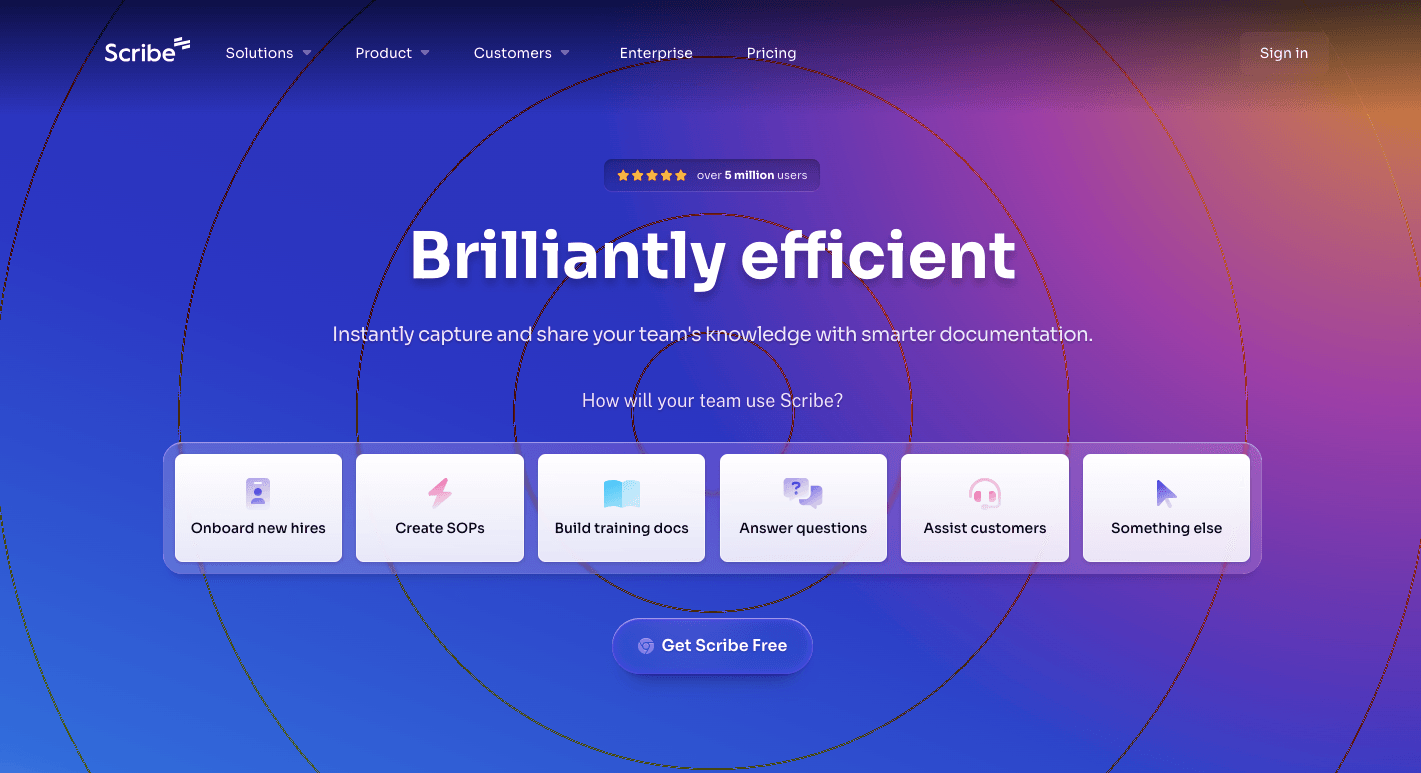
Scribe is your automatic notetaker for processes. You click record, go through the steps of your task, and the tool builds a guide for you.
Each action is captured with text and screenshots, so you don't waste time writing instructions by hand. Many teams use Scribe as a workflow generator, since it produces ready-made guides that show exactly how something is done.
You can run it as a browser extension for quick tasks online or as a desktop app when work stretches across different programs. Once a process is recorded, you can edit the text, add notes, or highlight steps.
It further improves collaboration since guides can be stored in shared knowledge bases and updated over time. With features like Pages, Scribe even lets you combine several guides into a larger manual for onboarding, training, and keeping instructions consistent.
Key Features
- Automatic capture - Records clicks, keystrokes, and on-screen actions.
- AI text generation - Creates step instructions without manual writing.
- Customization - Lets you reorder, merge, and annotate steps.
- Pages - Combines guides, videos, and text into full manuals.
- Sharing - Distributes guides through links, embeds, or exports.
- Viewer analytics - Tracks views and usage to keep guides accurate.
- Security - Enterprise-grade controls, including SSO and data protection.
Pros
- Saves hours by creating guides automatically.
- Very simple to set up and use.
- Guides can be branded and customized.
Cons
- Desktop recording is locked to paid plans.
- Some features require practice, like building full pages.
- Language options remain narrow.
4. Trello
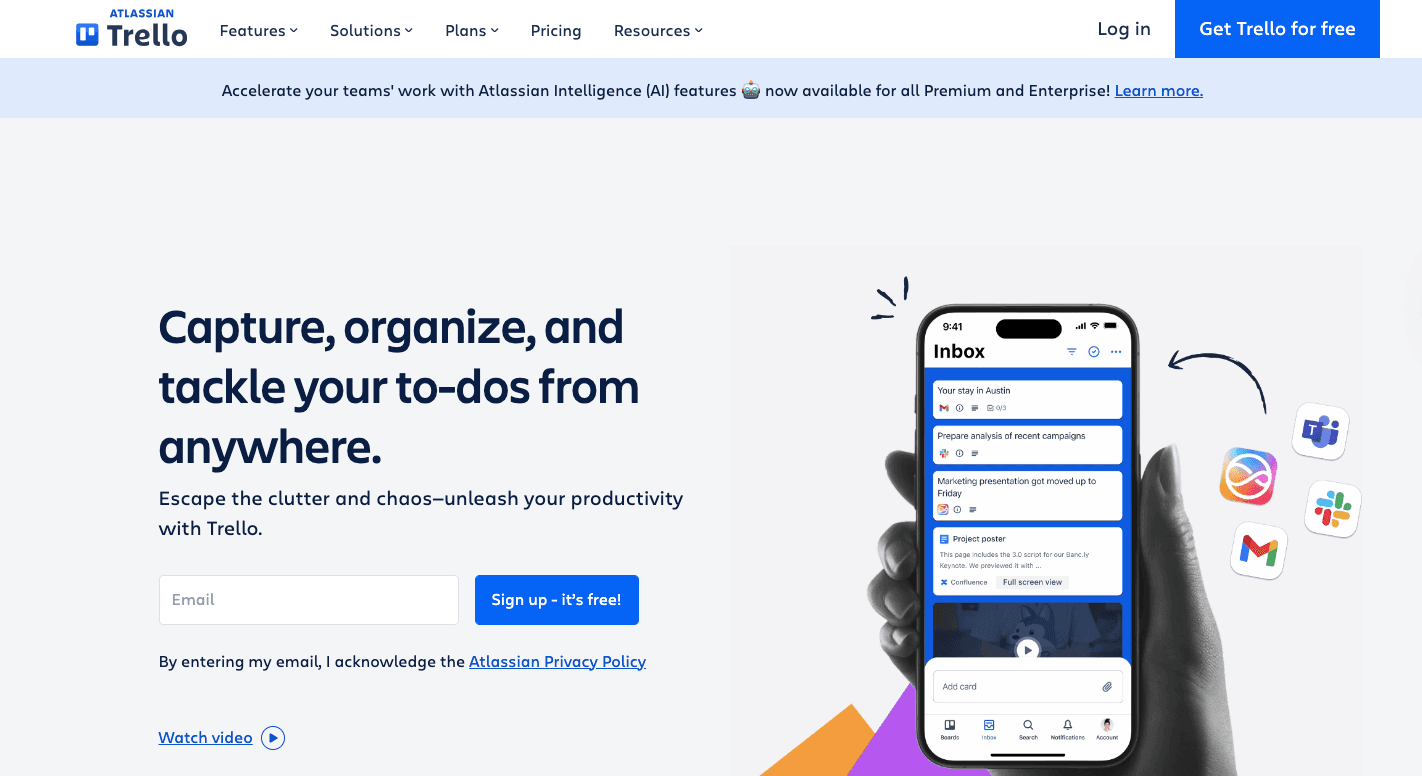
Trello delivers a visual board system where tasks live on cards that move through lists. Each board often represents a project, while lists mark progress stages like "To Do," "In Progress," and "Done."
As a new user, you can pick it up in minutes, and small teams can grow into it without trouble. Workspaces aren't capped by members either since they support unlimited users across boards.
Automation comes through Butler, Trello's built-in no-code tool that moves cards, sends alerts, and cuts down on manual steps. Integrations add even more reach. You can, for example, push a follow-up from Slack or Microsoft Teams directly into a board.
Power-Ups extend the platform further with dashboards, reports, or card mirroring to keep information synced across projects.
Key Features
- Boards - Digital spaces that outline projects or workflows.
- Lists - Columns that separate work stages.
- Cards - Items that hold details, attachments, and checklists.
- Automation (Butler) - Rules that handle repetitive actions automatically.
- Power-Ups - Connections to apps, such as Slack, Google Drive, and Microsoft Teams.
- Card mirroring - Keeps cards updated across different boards.
- Multiple views - Timeline, calendar, dashboard, and map in higher plans.
- Permissions and access - Control over privacy and security.
Pros
- Easy to understand for first-time users.
- Built-in automation through Butler.
- Hundreds of integrations available.
Cons
- Hard to manage complex projects or dependencies.
- Needs Power-Ups for advanced views and features.
- Depends on external chat apps for live conversation.
5. Notion
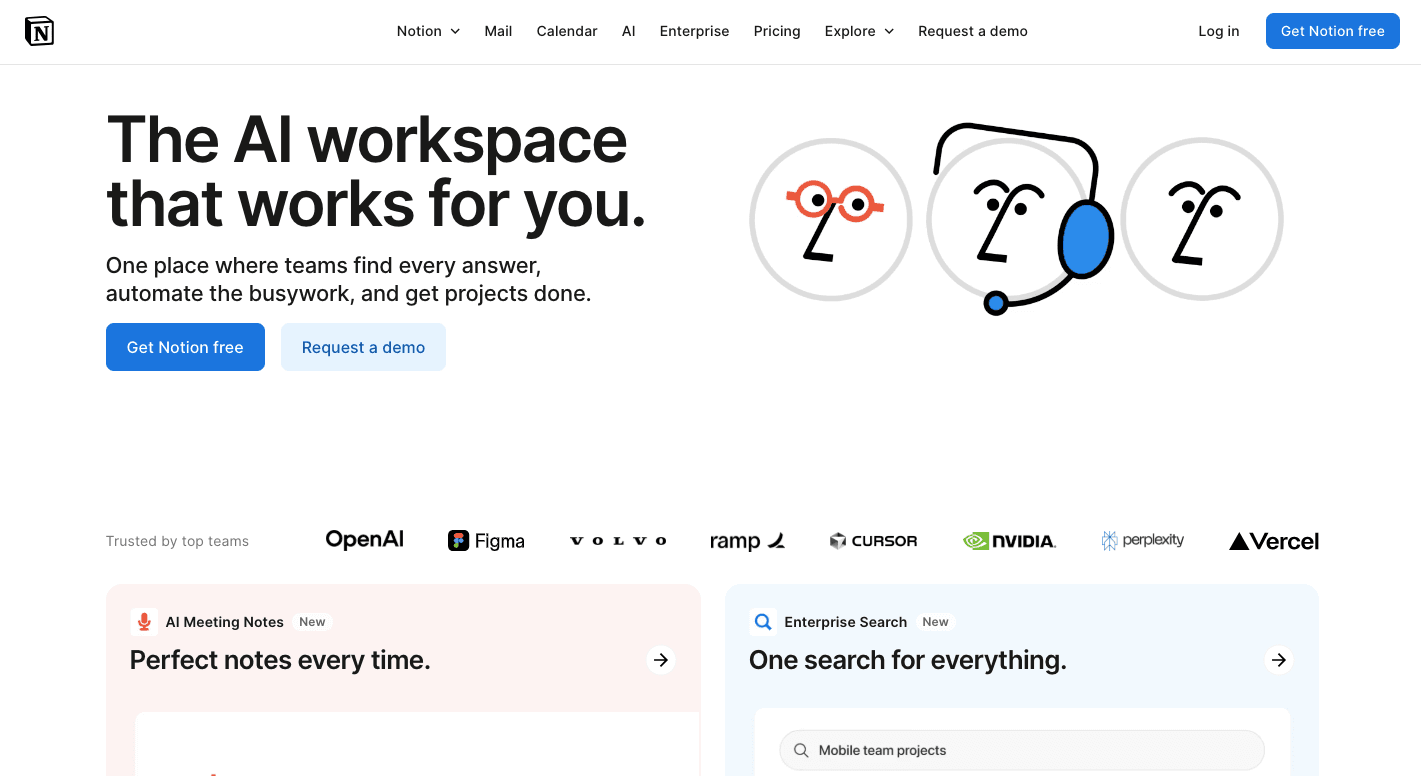
Notion pulls together notes, tasks, wikis, and databases into one workspace. People often use it to start with something as simple as a to-do list and build all the way up to a complete company wiki.
Pages act like a blank canvas, and you can drop in blocks for text, tables, or embeds. Databases then add structure and let you track projects with custom properties, timelines, or boards.
Built-in AI features make it easier to draft notes, summarize pages, or create new databases, too. It also works across devices, including Android apps, so edits and updates happen wherever you're working.
Multiple people can even work on the same page, leave comments, or assign tasks. Notion supports progress tracking through customizable databases and multiple views as well.
Key Features
- Pages and blocks - Basic units where you can add text, images, tables, or embeds.
- Databases - Store tasks and projects, view them as tables, boards, calendars, or timelines.
- Progress tracking - Databases can be customized with fields to track status or deadlines.
- Page history - A lightweight version control feature for reviewing changes.
- Real-time collaboration - Multiple users can edit or comment on a page at once.
- AI features - Built-in tools for drafting, summarizing, and creating structured content.
- Integrations - Connects with Google Drive, Slack, GitHub, and more.
- Templates - Pre-made structures for habit trackers, wikis, or project databases.
Pros
- Highly customizable with blocks and databases.
- Wide range of templates available.
- Real-time editing supports collaboration.
Cons
- Learning curve for new users setting up advanced systems.
- Limited reporting tools compared to other apps.
- No native chat function.
6. Jira
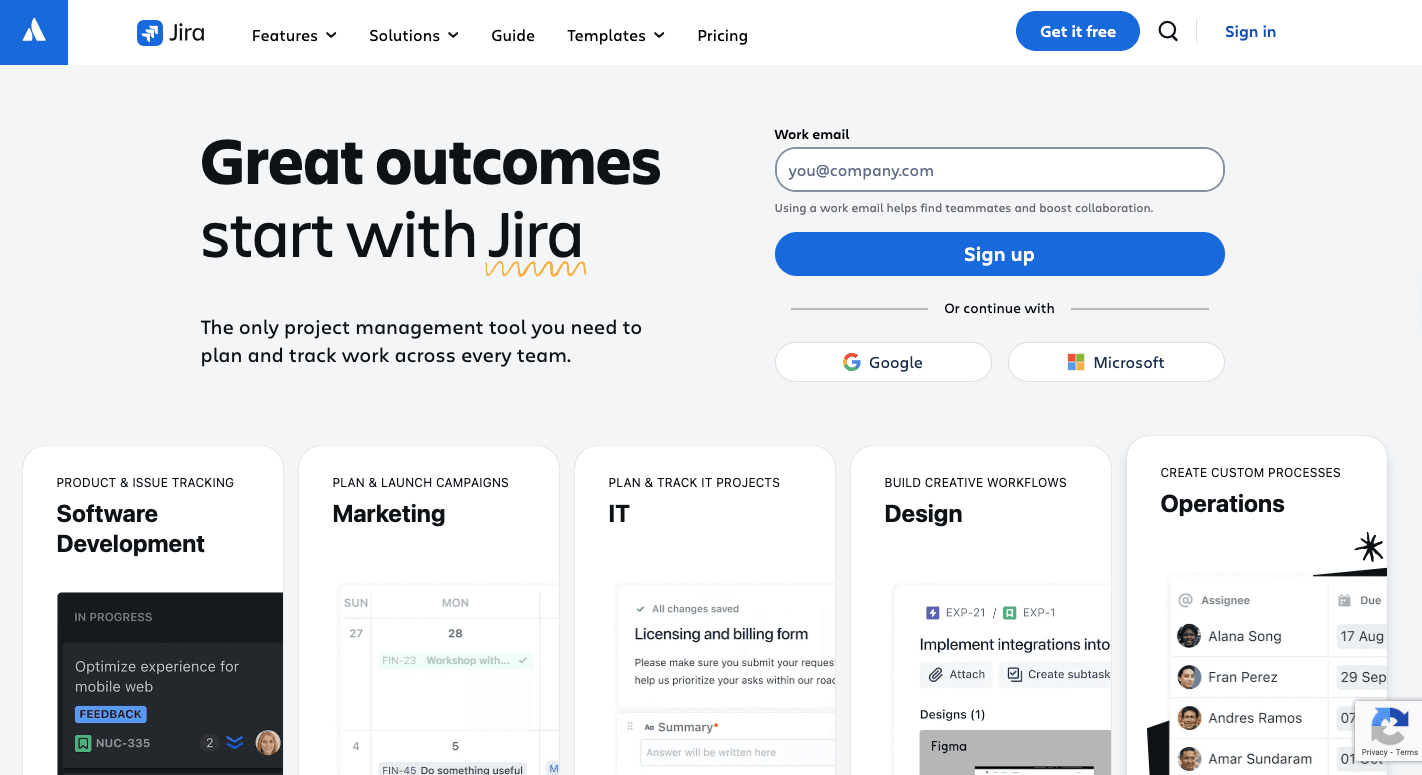
Jira started as an issue tracker for software development, but it has grown into a full project management platform used by many types of teams. Work is organized into projects, and each project is broken down into issues.
Boards make the process easier to follow. Scrum boards support sprint planning, while Kanban boards focus on continuous delivery. Backlogs act as a queue, so you can decide what to work on next.
You can also design custom workflows, add custom fields, and adapt reports to match your needs. And with integrations and options for external collaboration, Jira scales from small groups to very large enterprises, though it feels heavy for teams that prefer something simpler.
Key Features
- Workflows - Configurable paths that adapt to complex processes.
- Backlogs - Prioritized issue lists to plan upcoming work.
- Sprint planning - Built-in tools for assigning and running sprints.
- Time tracking - Track hours and effort directly on issues.
- Custom fields - Add unique data to tasks for detailed tracking.
- Reports and dashboards - Velocity charts, burndowns, and widgets.
- Automation - Rules that handle repetitive updates or alerts.
- Integrations - Atlassian Marketplace apps plus Slack, GitHub, and more.
Pros
- Detailed issue and project tracking.
- Workflows that adapt to many use cases.
- Large integration marketplace.
Cons
- Setting up for complex processes takes effort.
- May run slower with very large projects.
- Overkill for teams with basic needs.
7. Google Workspace
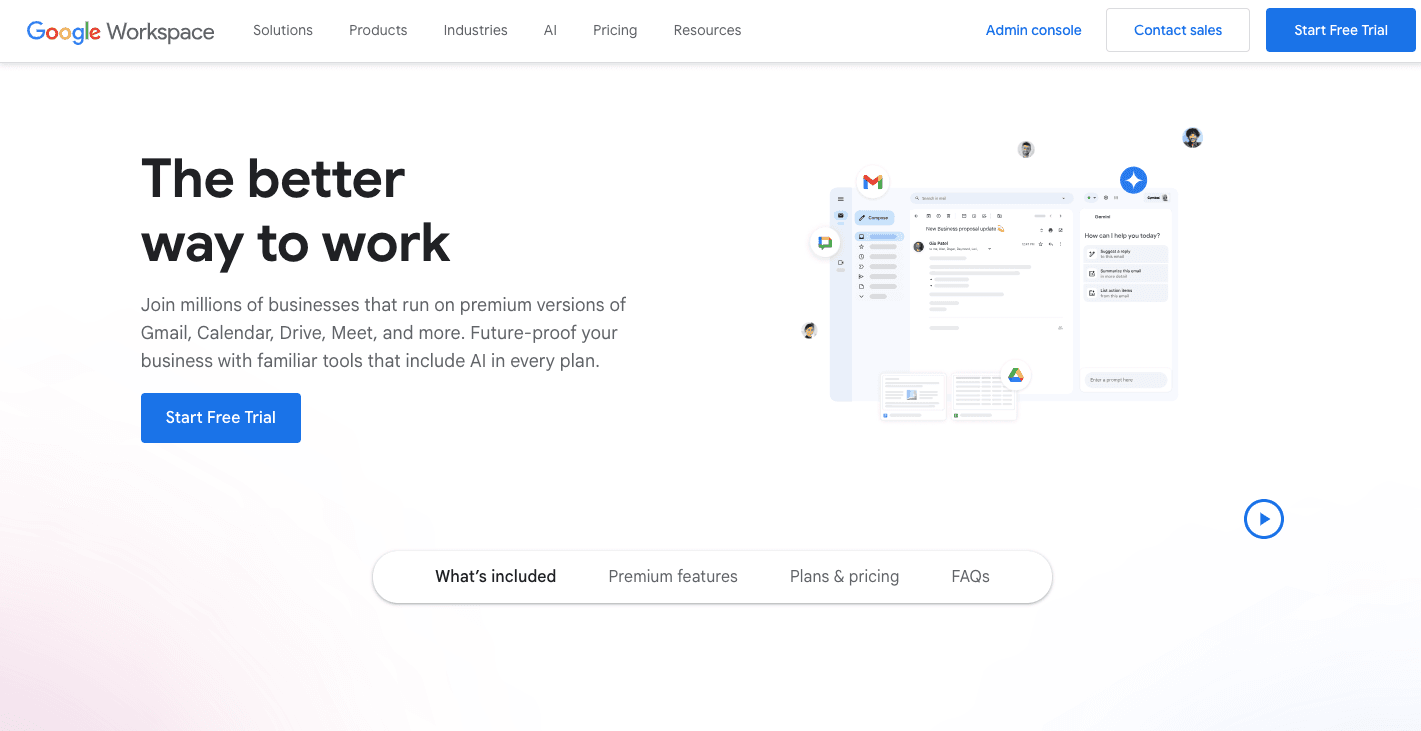
Google Workspace combines Gmail, Drive, Meet, Calendar, and Docs in one platform. Everything runs in the cloud, so there's no need to install extra software or handle updates.
An admin sets up domains, manages accounts, and controls permissions from a single console. With that setup, teams work more smoothly since communication, file storage, and scheduling stay connected.
Each app ties into the next. Gmail delivers business email, while Meet and Chat cover video calls and messaging.
Drive provides cloud storage with secure access, and collaborative docs like Docs, Sheets, and Slides allow multiple people to edit files at the same time. Managers can also pull real-time reports from dashboards to see usage, spot trends, and measure adoption.
Mobile apps extend the same experience to phones and tablets, so work continues from anywhere.
Google Workspace is free for personal use, but business-focused features only come with a 14-day free trial, and not a forever-free plan.
Key Features
- Gmail - Custom domain email with advanced spam filtering.
- Google Meet - Video meetings with recording, breakout rooms, and screen sharing.
- Google Chat - Direct and group messaging inside shared Spaces.
- Google Calendar - Smart scheduling that integrates with Gmail and Meet.
- Google Drive - Cloud storage and syncing with flexible file permissions.
- Docs, Sheets, Slides - Collaborative docs with real-time co-editing.
- Forms and Sites - Build surveys and internal web pages without coding.
- Admin Console - Central dashboard for users, devices, and security.
- Security features - Two-step login, endpoint management, and data protection.
Pros
- Real-time co-editing across all core apps.
- Cloud-based access from any device.
- Strong compliance and security protections.
Cons
- Workspace apps lack some advanced desktop functions.
- Lower-tier plans have strict storage caps.
- Formatting issues with complex Microsoft Office files.
- Business features offered only in a free trial, not a forever-free plan.
The Only Free Workflow Software You Will Ever Need Is Activepieces
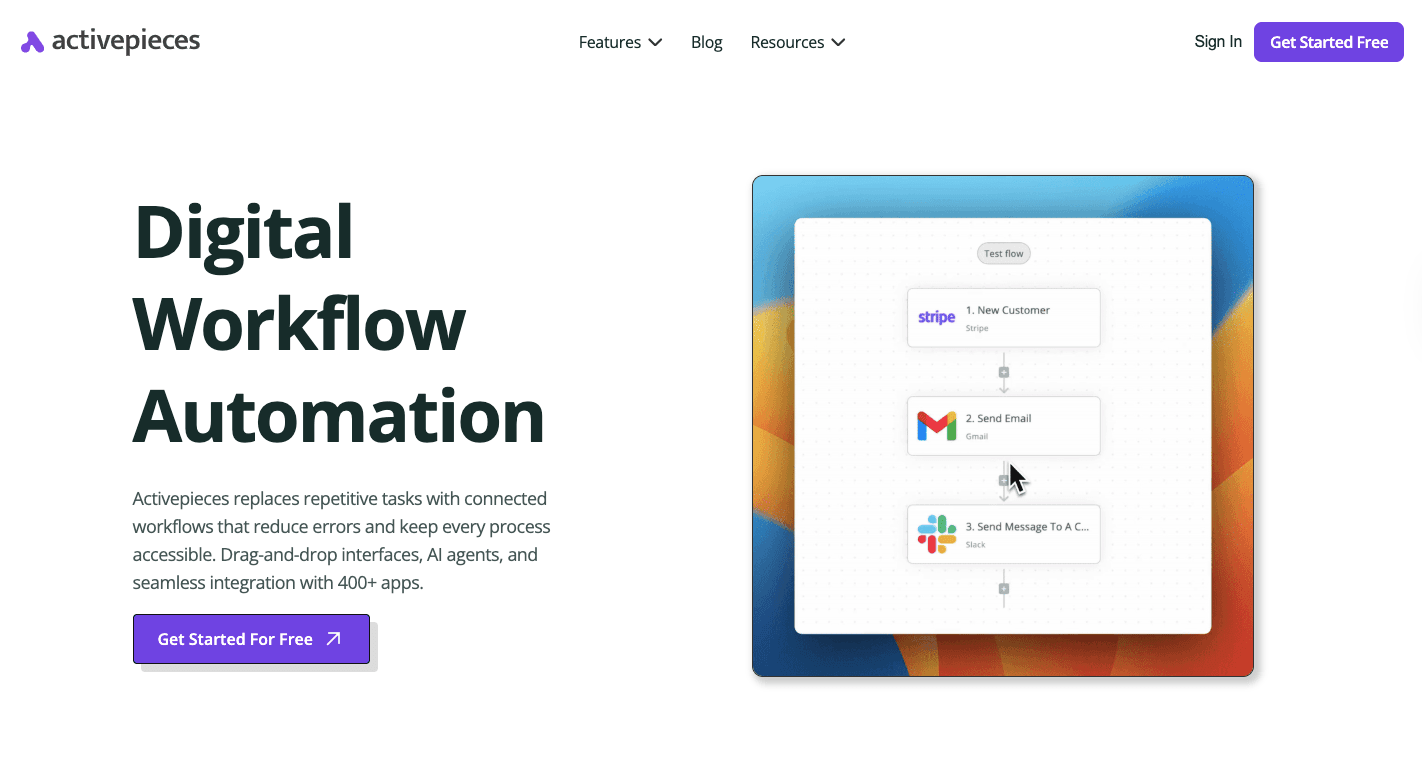
Automation platforms typically come with limits that force you to pay sooner than you expect. Activepieces works differently.
The free plan gives you real room to experiment, so you can build flows without rushing into an upgrade. When you do need more, the cost doesn't spike with usage. That's why it fits small businesses just as well as it fits bigger organizations.
You're not stuck with cookie-cutter setups either. It lets you design your own workflows from scratch. You can link apps together, drop in AI steps, and build custom automations that handle the details for you.
For non-technical folks, the builder will feel familiar the moment you open it. Developers can go deeper with TypeScript and extend it further.
Every flow you design increases productivity. A marketer can send instant follow-ups. Sales can keep CRMs updated without lifting a finger. Support can route tickets automatically. Whatever the use case, Activepieces cuts out repetitive work so your team can focus on the tasks that matter.
Open a free account with Activepieces and let your workflows run smarter!
FAQs About Free Workflow Software
How to create workflows for free?
You can create workflows for free with tools like Activepieces, which offers a free plan that includes automation, AI steps, and integrations without strict task limits.
Are Google workflows free?
Google workflows are free through Google Workspace tools like Docs, Sheets, and Forms, but advanced automation features usually require paid plans.
Does Microsoft have a workflow tool?
Microsoft has a workflow tool called Power Automate, which lets you connect apps and set up automation, though most business use cases need a subscription.
What is the best program to create a workflow?
The best program to create a workflow depends on your needs, but Activepieces is one of the strongest options for both individuals and businesses since it combines no-code simplicity, AI, and scalability in one platform.


